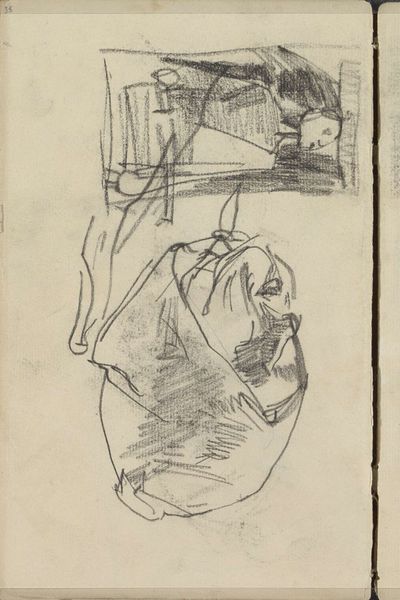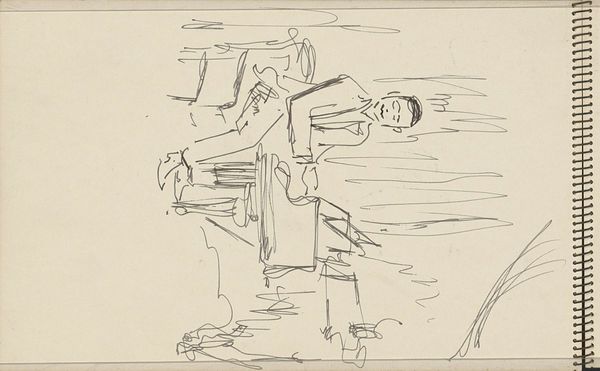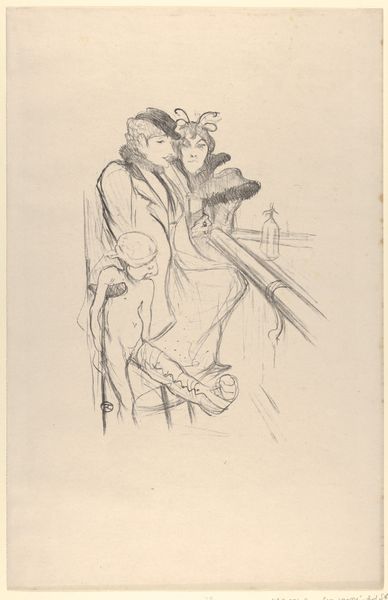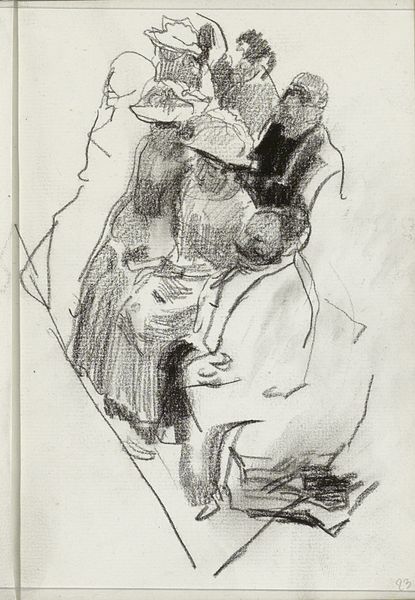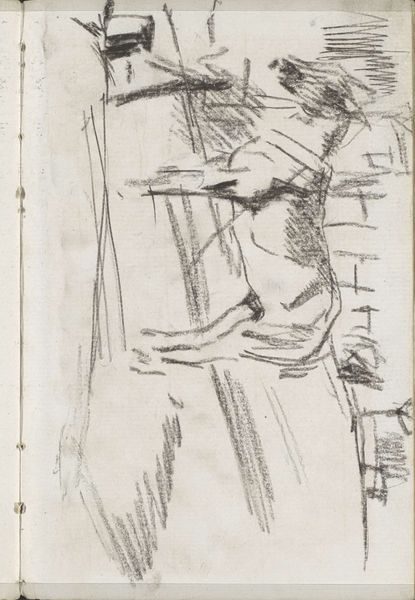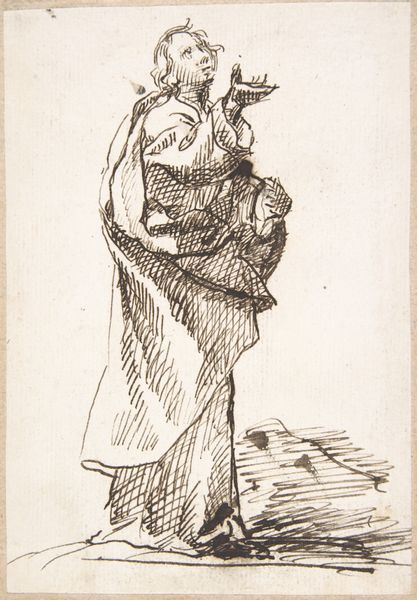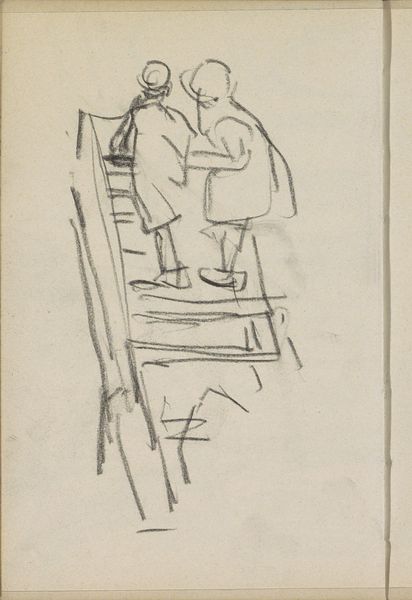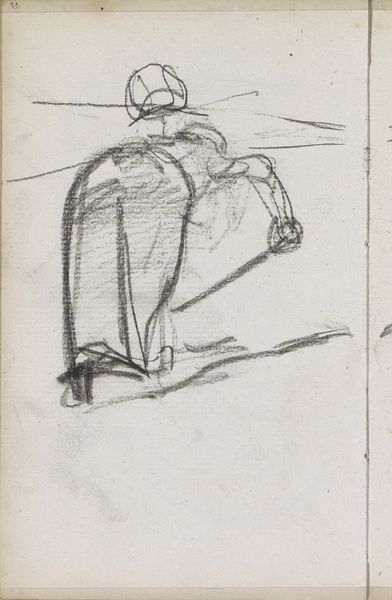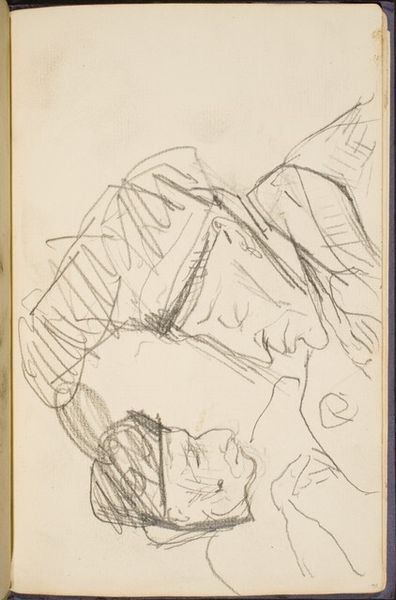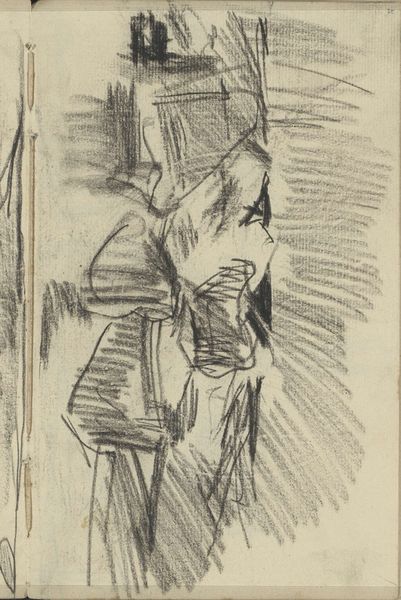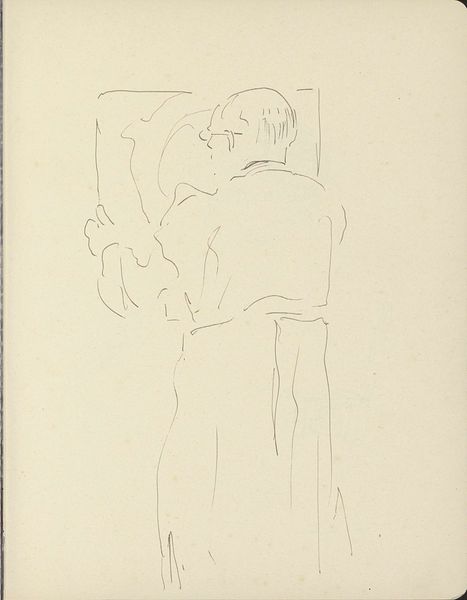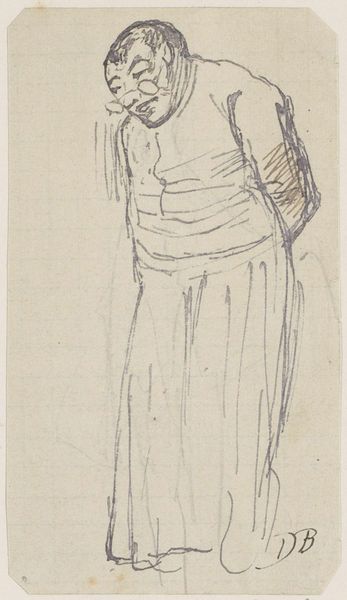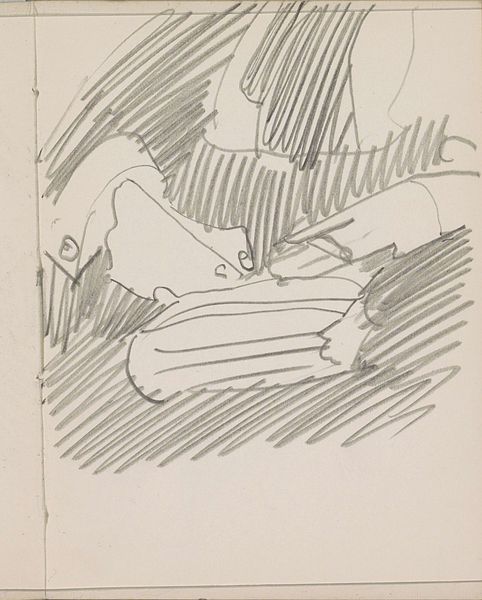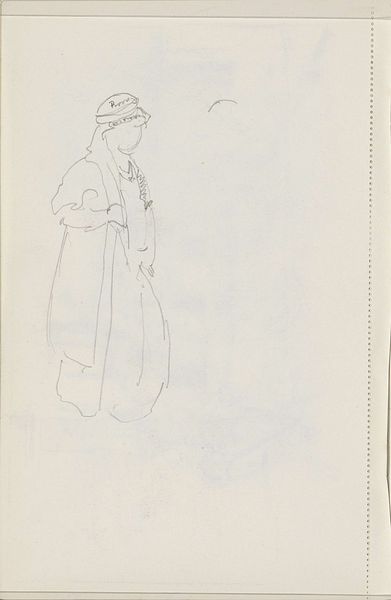
drawing, pencil
#
portrait
#
drawing
#
pencil
#
line
#
modernism
#
realism
Dimensions: 36.5 x 26.5 cm
Copyright: Pyotr Konchalovsky,Fair Use
Curator: Here we have Pyotr Konchalovsky's 1926 pencil drawing, "Volkhov. At the ferry." A woman is centered in the composition, seemingly caught in a moment of thought. What's your first take on this image? Editor: She has such a calm, grounded presence. Her slight smile and the relaxed way she holds herself speak of a quiet strength, and confidence. Curator: Indeed, and considering the social climate of 1920s Russia, there's a strong undercurrent of social realism in the subject. Post-revolution art aimed to represent ordinary people, elevating the working class. Konchalovsky, while trained in a more impressionistic style, seemed to shift toward this aesthetic in his later work. Editor: I see that, and I'm interested in the choice to portray a woman, seemingly engaged in her everyday work, with this air of self-possession. The kerchief she wears itself feels symbolic of working class women in the Soviet era. How was Konchalovsky positioned within the artistic circles of his time? Curator: He occupied an interesting position. Initially associated with avant-garde movements, he later embraced a more realistic style, fitting the ideological demands of Socialist Realism. The use of pencil allows for detail, though this sketch has a simplicity that emphasizes form. Look at the loose lines suggesting the background and the defined rendering of her body. Editor: You can definitely feel the artistic shift. While the style seems quite relaxed for "social realism," this work provides the glimpse into the social dynamics within the art world and the evolving artistic styles adopted or influenced by the Bolshevik revolution. One also can read a strong connection with past iconic representations of women, in particular with representations of Madonna, with that slightly tilted head and kind gaze. Curator: A great point! Perhaps the artist wasn’t fully letting go of some earlier imagery that resonated with him. So this work captures that transformation happening right then, revealing layered context between individual, social, and iconic representation. Editor: Absolutely, making it such a powerful record of a period where public and individual, tradition and revolution, clashed and reconfigured on all possible levels of society and art.
Comments
No comments
Be the first to comment and join the conversation on the ultimate creative platform.
